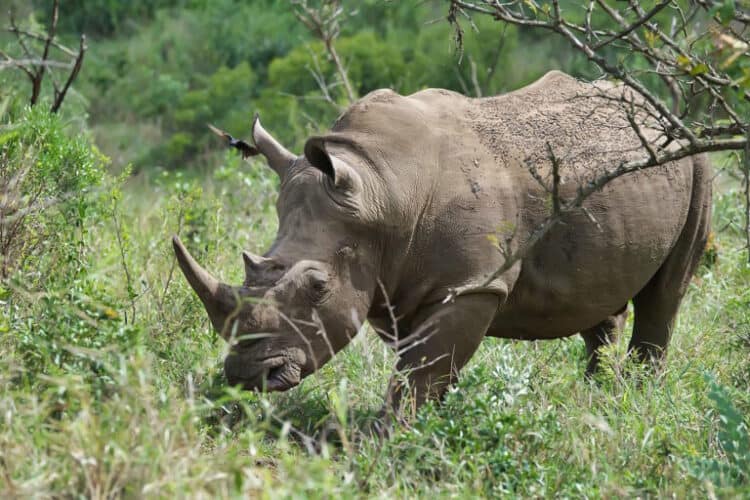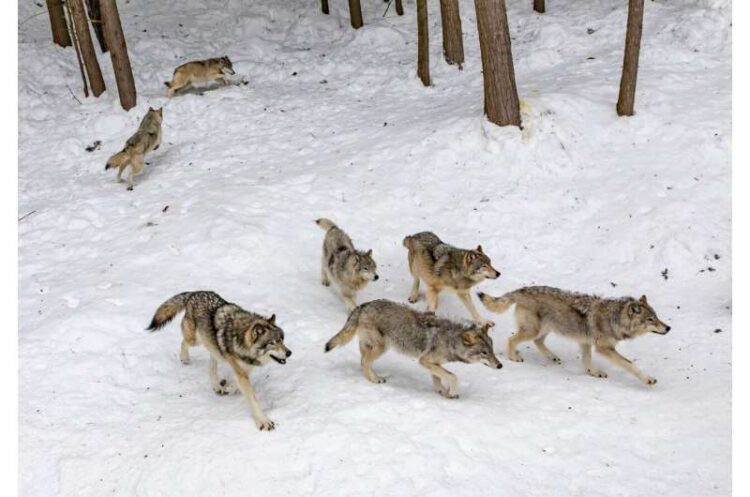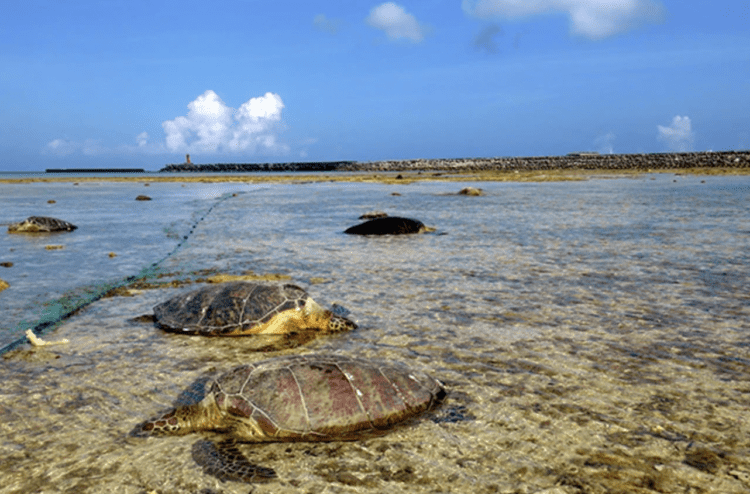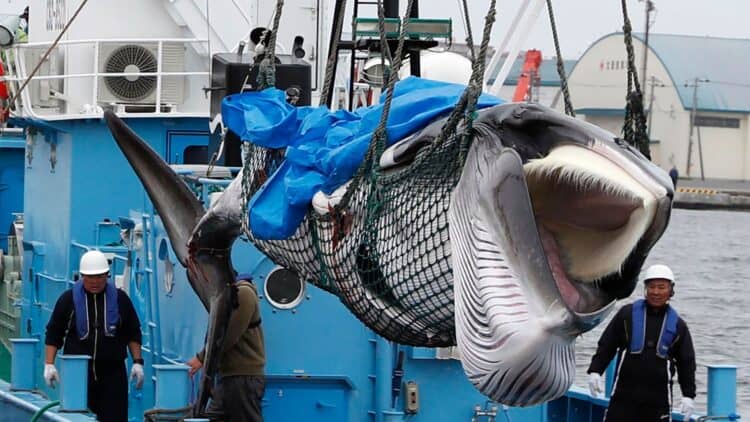Several Japanese zoos and aquariums voted last week to stop buying and selling dolphins taken during the notorious Taiji roundup, made infamous in the Oscar-winning documentary, The Cove. Yet animal advocates are dubious that it will stop the slaughter.
The Japanese Association of Zoos and Aquariums has banned the buying and selling of dolphins from the controversial Taiji hunt, made infamous by the Oscar-winning documentary The Cove, after years of pressure from animals rights groups.
The organization, which accredits 37 Japanese marine parks, voted for the measure last week under threat of expulsion from the World Association of Zoos and Aquariums. The international group opposes drive hunts, in which wild dolphins are driven into a confined space and slaughtered.
Each year, during a September through February hunting season, fishermen from the town of Taiji (map) on Japan’s southeastern coast round up dolphins and herd them into a cove, where hundreds are killed for meat and dozens are selected for sale to marine parks.
The ban is “a big step because it’s a statement from within the industry,” says Courtney Vail, campaign and programs manager at the United Kingdom-based group Whale and Dolphin Conservation. But Vail doubts that the Japanese Association of Zoos and Aquariums step will put an end to the annual hunt.
“I do believe that the drive hunts will not end until the overall ethic towards whales and dolphins that permeates Japan’s political and social culture evolves,” she says.
The World Association of Zoos and Aquariums did not respond to a request for comment on the decision.
Fewer Options for Captive Dolphins
Still, the ban likely will affect the Taiji hunt, as well as Japan’s dolphinariums, which have long relied on Taiji as a quick and easy source of the marine mammals.
According to a 2013 Elsa Nature Conservancy survey, about 600 dolphins live in 54 marine parks in Japan, 37 of which are members of the Japanese Association of Zoos and Aquariums and are now precluded from buying (or selling) dolphins from Taiji.
The Japanese association’s secretary-general, Naonori Okada, has said that the group’s members keep upward of 250 dolphins, and that Japanese aquariums have purchased an average of 20 Taiji dolphins a year. Yet export data indicates Japanese marine parks have probably been more reliant on Taiji dolphins than that.
For example, in 2010 and 2011, 2,252 dolphins were caught by Taiji’s fishermen, and 302 were sold to marine parks, according to Ceta-Base, an independent database of captive marine mammals worldwide. Of those, 177 were exported, meaning 125 dolphins (or 41 percent of the total), were likely sold within Japan.
Japanese Association of Zoos and Aquariums chairman Kazutoshi Arai suggested in a news conference that more captive breeding could be an alternative to purchasing dolphins from the drive hunt. Yet a number of Japanese marine parks may not have the know-how or facilities needed to replace Taiji’s steady flow of dolphins with captive births.
According to a Japan Times survey, five members of the Japanese association already have said they may quit the organization, presumably to keep buying dolphins from Taiji.
Another two have indicated that they might quit in the future, with 16 saying they will remain members for now.
Worth More Alive Than Dead
The town of Taiji is also exploring its options. Live-dolphin sales are worth millions annually to the Taiji Fishery Union and the brokers who sell them on to marine parks. Live dolphins also generate the majority of the income from the drive hunt—a dead dolphin sold for meat generally goes for hundreds of dollars, while a live dolphin with basic training can be sold for U.S. $40-$50,000 abroad and $20-$30,000 in Japan.
Taiji’s mayor, Kazutaka Sangen, remains defiant about the dolphin hunt, telling the Associated Press: “We are hunting under the permission of the Japanese government and prefecture, and so we will continue to protect our fishermen and the methods. We will not quit.”
Taiji has a well-developed foreign market for its dolphins, with 105 facilities in some 20 countries buying Taiji dolphins in the past, so it’s possible Taiji will simply increase foreign sales. But in case there’s a drop in demand or Taiji’s ability to sell drive-hunt dolphins, Sangen told reporters that the town is considering penning off a section of the cove used to corral wild dolphins and creating a breeding center.
Focus on Buyers
With so much uncertainty, activist Ric O’Barry, whose longstanding fight against Taiji was featured in The Cove, says that his Dolphin Project plans to keep up the pressure to end the dolphin hunt completely, starting with a worldwide protest at Japanese embassies and consulates around the world on the day the next hunting season in Taiji opens in September.
“We will have a small team on the ground [in Taiji] for the [season],” he O’Barry says. “This year we have to pay attention to who is capturing dolphins. The main dealer is the Taiji Whale Museum, and they are a member of JAZA.”
Vail, of Whale and Dolphin Conservation, is also paying attention to how the World Association Of Zoos and Aquariums and the Japanese Association of Zoos and Aquariums respond to dolphins procured outside of Taiji.
“The real issue is live-capture, and given the demand for wild dolphins in Japan, there is money to be made in creating new sources,” she says.
“Without the withdrawal of all global aquaria from sourcing any marine park dolphins from the wild, we still must be concerned about the association between captive facilities and the drive hunts, and other wild captures.”
This article was first published by National Geographic on 27 May 2015. Lead Image: Visitors to Tokyo’s Shinagawa Aquarium watch dolphins in May. PHOTOGRAPH BY KIMIMIASA MAYAMA, EPA/CORBIS.
What you can do
Support ‘Fighting for Wildlife’ by donating as little as $1 – It only takes a minute. Thank you.








Leave a Reply